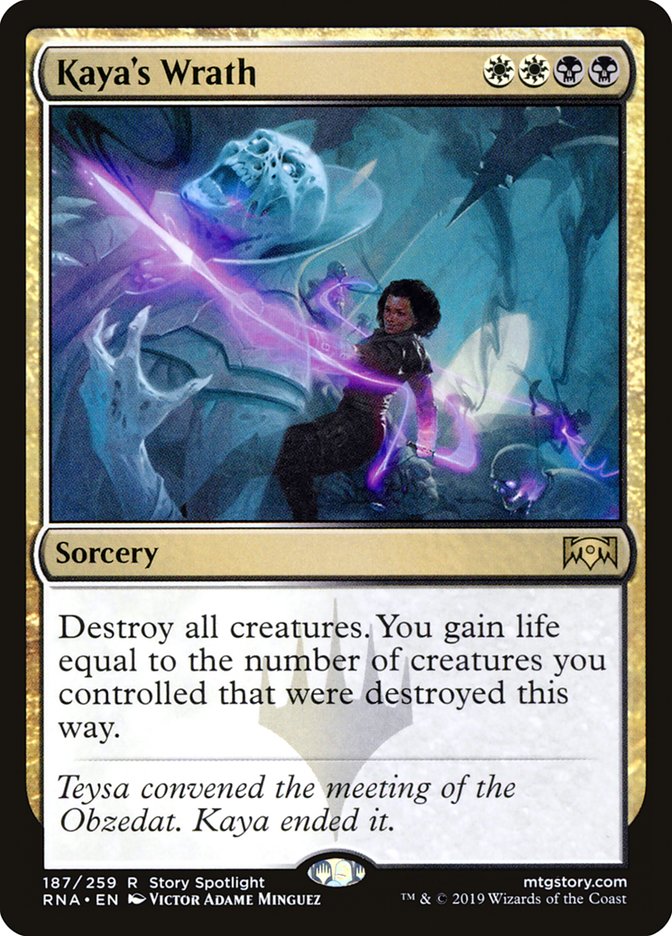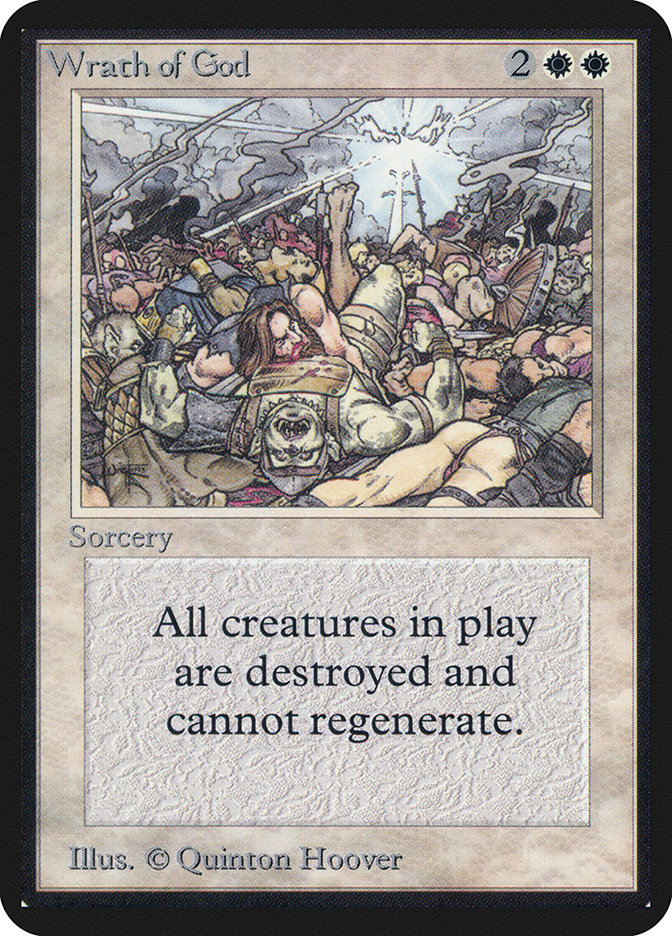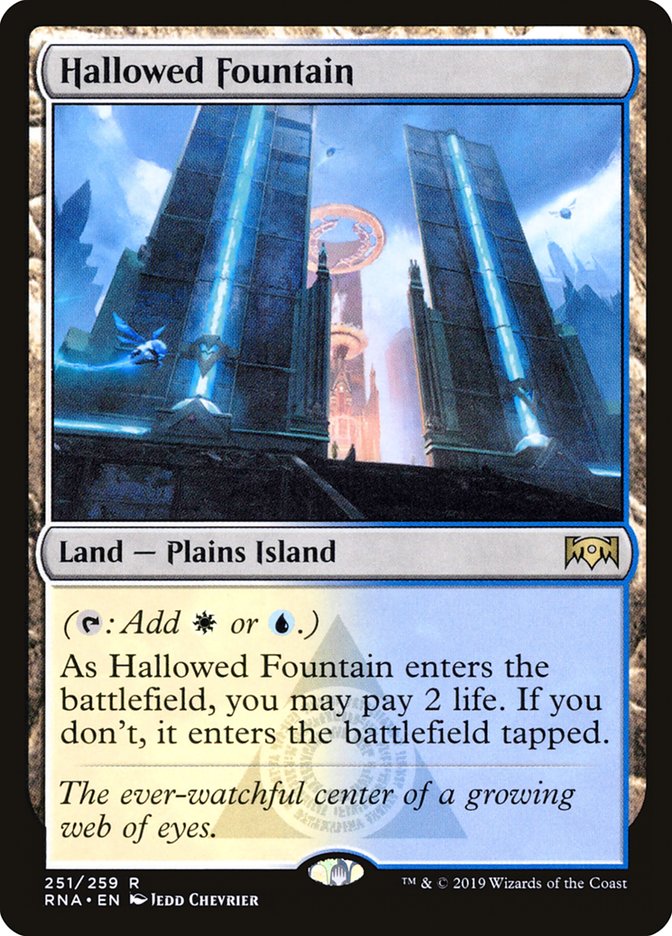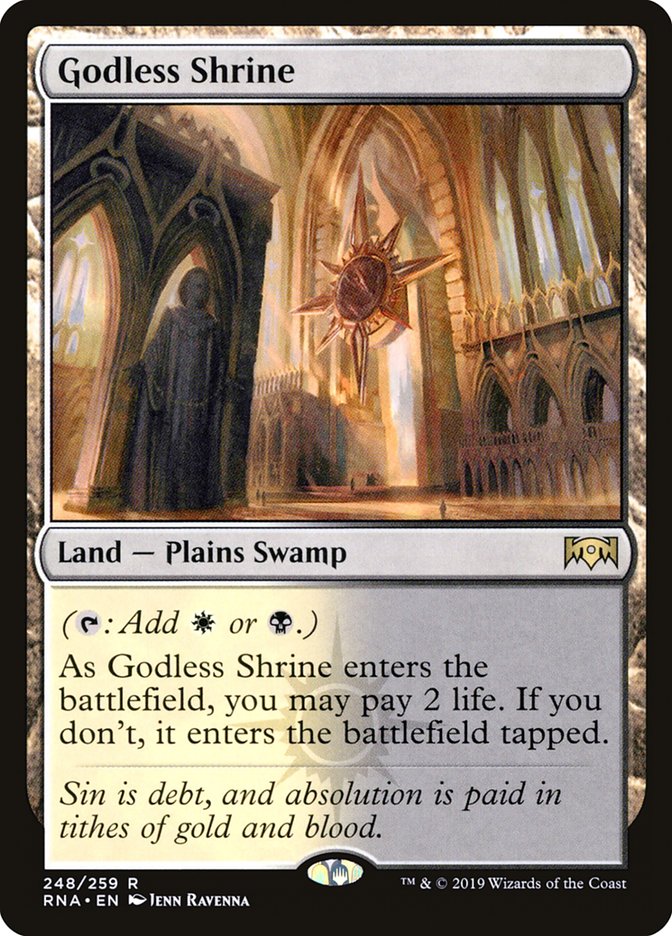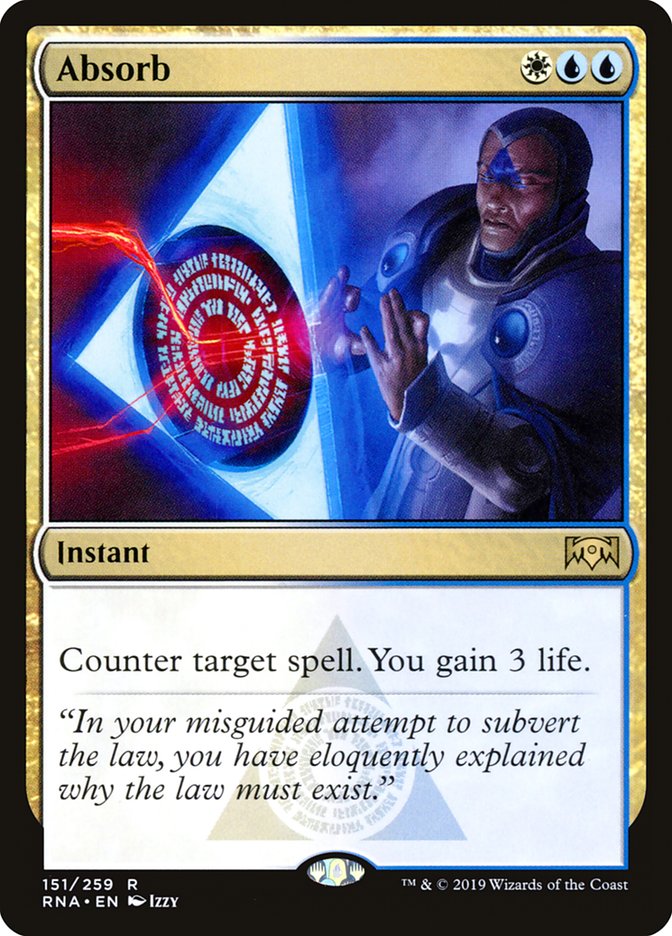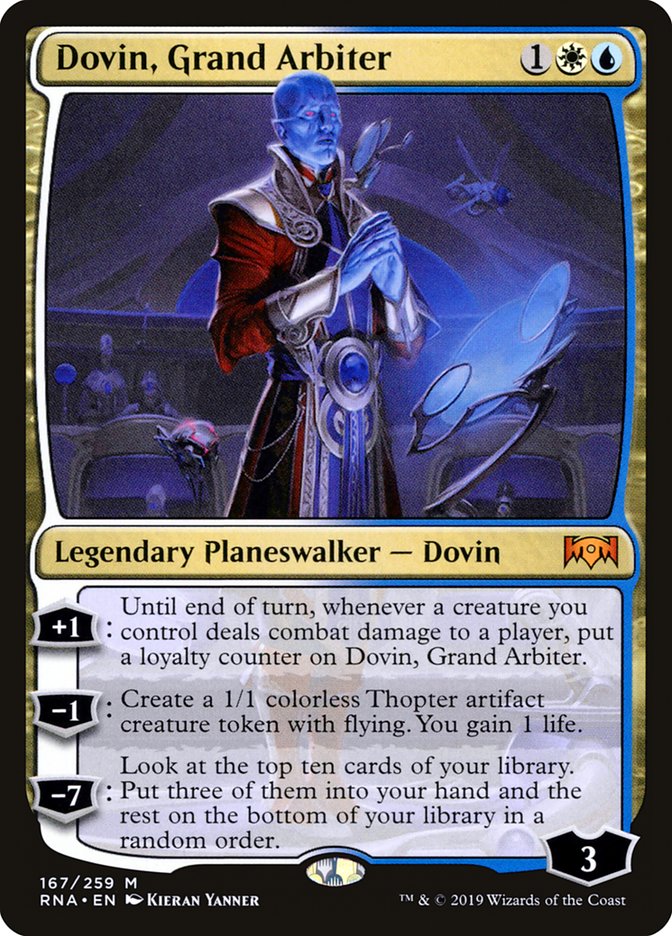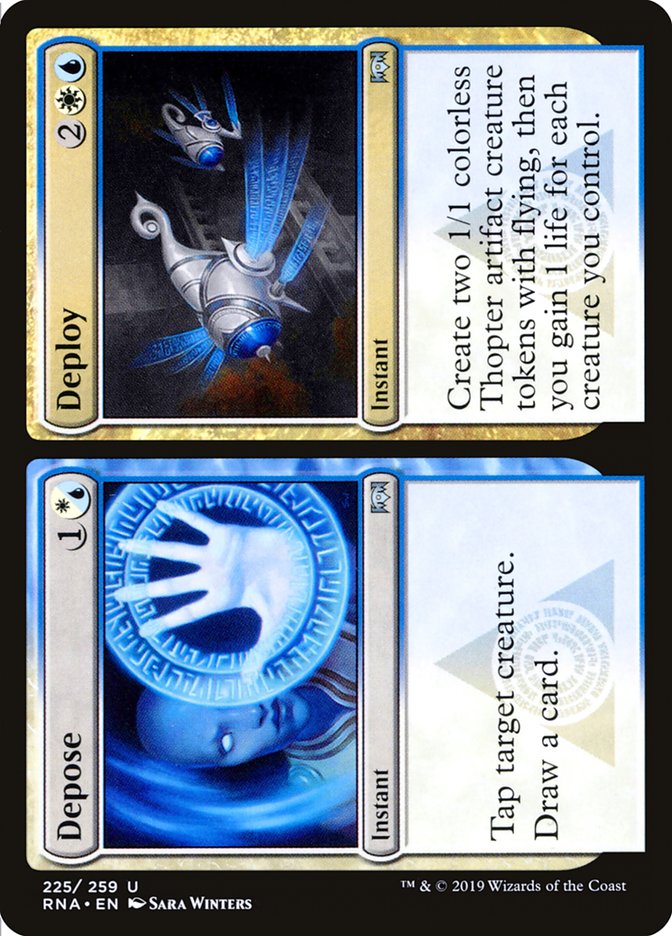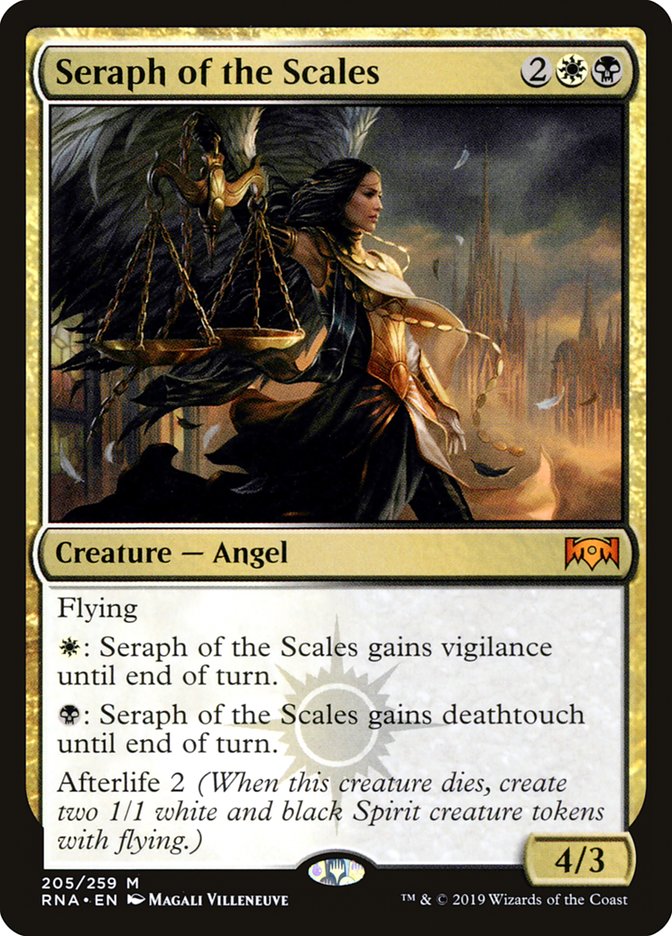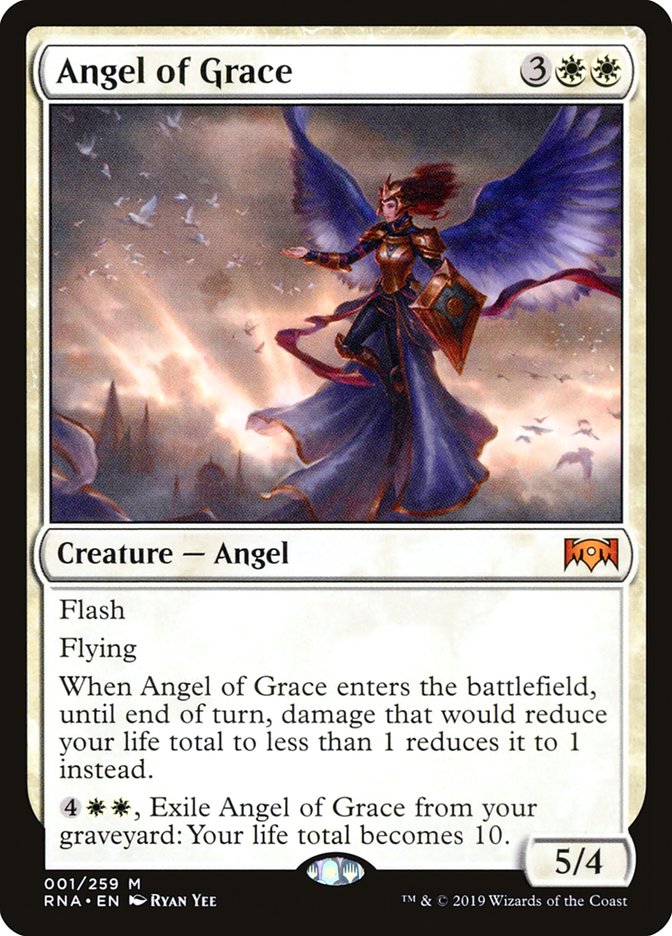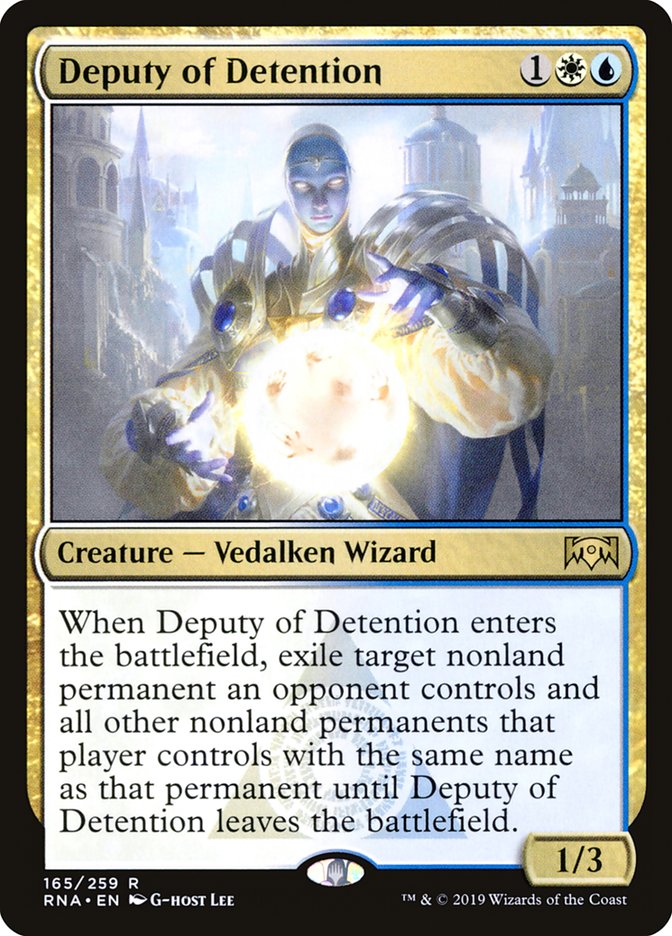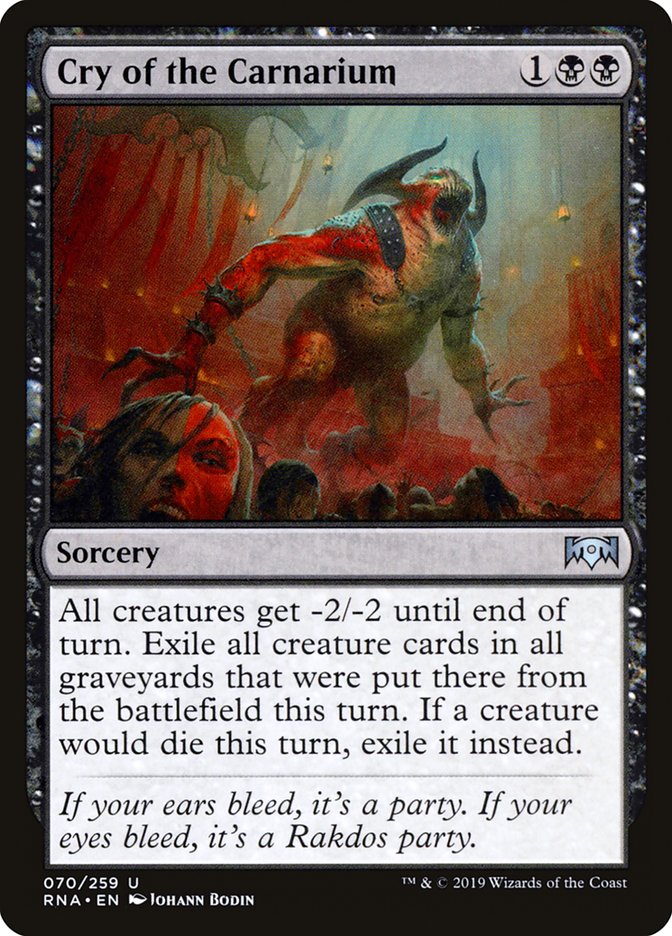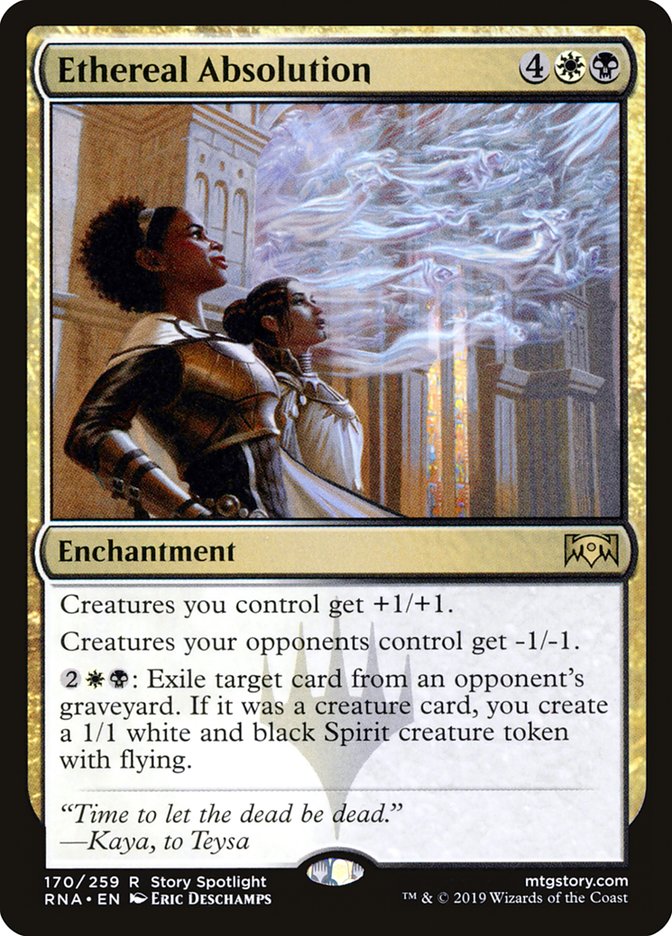Many of us were expecting a control wave in Ravnica Allegiance.
With two of the flagship guilds revealing themselves this set, it seemed
like a forgone conclusion. We still haven’t seen all the cards yet, but at
this point it’s looking like the Azorius Senate and Orzhov Syndicate have a
few more creatures this time around. This led to some initial frustration,
until the release of Kaya’s Wrath a few days ago.
One of the biggest perks of Kaya’s Wrath is we can call it “Wrath” again.
Even with the rotation of Wrath of God many years ago, I have still clung
to that phrase with my icy grip, even though many of the newcomers probably
have no clue what I’m talking about. It’s crazy to think that Wrath of God
hasn’t been Standard-legal for a decade, but lucky for us, we had other
four-mana wraths come and go. Day of Judgment and Supreme Verdict were fine
replacements until that fateful day when they took everything from us. It
was announced that four-mana wraths and two-mana removal with minimal
drawback were done for and that the development team was going to raise the
premium on both of those effects. Doom Blade was the culprit from the spot
removal side and Supreme Verdict was the last of its kind…until now.
A four-mana wrath set the bar for midrange and aggro decks to respect and
fear. There was an understanding between us and them, which was the price
they’d pay for overextending their forces onto the battlefield. This format
norm added layers of skill to the game that haven’t existed for many years.
These days, players piloting decks full of creatures just summon them all
without a care in the world, knowing we aren’t playing a bunch of terrible
sweepers to punish them. There isn’t a moment where my opponents must try
to get a read on me if I have it or not, or for them to determine if they
can apply enough pressure while holding back some threats. This aspect of
the game was deleted, and it dealt a heavy blow to control’s viability for
years.
Deploying a Kaya’s Wrath on turn 4 isn’t the biggest advantage of its
converted mana cost. The ability to cast it and an additional spell,
relatively early in the game, is a huge plus. The very threat of having it
on turn 4 provides such an advantage that cards like Vraska’s Contempt get
even better. When players adapt to Kaya’s Wrath and begin to play around
it, we win in the end. Carnage Tyrant is a huge problem for control decks,
but not to the same degree now. If you’re piloting Esper Control with four
copies of Kaya’s Wrath in your maindeck, expect your win percentage to
increase against the biggest development mistake since Emrakul, the
Promised End. There’s no need to get cute anymore with The Eldest Reborn or
other sacrifice effects because of the catch-all nature of our new sweeper.
It’s no accident that this four-mana destruction spell occurs the turn
before Teferi, Hero of Dominaria arrives. One of the biggest weaknesses of
Teferi decks is its inability to keep a clear battlefield before casting
the best planeswalker since Elspeth, Sun’s Champion. Now with a wrath on
turn 4 and a Teferi on turn 5, there’s nothing in the format that I fear on
a molecular level. There’s no deck that I think will roll us, which is due
to the amount of options we have when building our new Esper Control deck.
Building around Kaya’s Wrath is the trickiest part of the card. We learned
that multiple colored spells aren’t as difficult to cast as it would appear
on paper. This was proven by the success of Niv-Mizzet, Parun, which is
easily summoned on turn 6 from Jeskai Control on a regular basis. The same
is true for Kaya’s Wrath; however, there are some side effects we must come
to grips with. The double blue situation is somewhat troubling, because we
will only have sixteen blue sources if we run no Islands.
Adding basics that make Kaya’s Wrath impossible to cast on turn 4 is
dangerous, especially when the opponent is aware of the challenge we’re
facing. When they see an Island in the early game, they know we’re not
casting a sweeper on turn 4. This causes a boatload of problems when facing
down aggressive decks that are just itching for the opportunity to unload
their hand without repercussion. I decided to run one Island, which gives
us seventeen blue sources. This is adequate for having access to Absorb
and/or Sinister Sabotage on turn 3. Depending on the matchup, you may not
even have to represent a Kaya’s Wrath on turn 4, which makes this a moot
point.
Running more than one Island diminishes our ability to control that
gameplay when we need it the most. There is a world where a Guildgate could
help prevent this situation from happening, but I’m going to thoroughly
test the build without Guildgates first because of how painful it is to
register one of these in a world where all shocklands are legal.
Planeswalkers (6)
Lands (26)
Spells (28)

This is my first take on the archetype with a new metagame in mind. Golgari
Midrange still has the tools to be terrifying, but there’s a chance it gets
even scarier with a third color added. The mana in Ravnica Allegiance Standard will be nearly perfect for any
two-color deck to seamlessly add a third. For control players, it comes at
a higher price. We tend to nurture our life total more, using every point
to fight to the bitter end. Other decks throw away life left and right,
which often doesn’t cost them the game. Our life is a precious resource
that shocklands heavily tax.
The manabase of this Esper Control deck contains eleven shocklands, but I
may drop to ten. I plan on playing at least that many in order to satiate
the blue demand, as well as guarantee our checklands enter the battlefield
untapped. Playing a bunch of basics many be the way to go if our
counterspells aren’t worth it, but that realization will come after heavy
testing in the new Standard.
I wrote extensively about Absorb (
here
), Precognitive Perception (
here
), and a small blurb on Mortify (
here
). I stand by the statements written, and I’m very excited to try them out
in the upcoming weeks. Once the full set is released, I will prepare the
testing gauntlet with my team and then make some changes based on what is
discovered. The big question mark is still on Absorb.
I highlighted the dilemma in my
earlier article
about not being sure if Sinister Sabotage is better. Surveil is a powerful
control ability, and gaining three life doesn’t have the same game-saving
effect of hitting a land drop early and binning a land late. The idea that
gaining three life buys you the turn that the lost surveil would have given
is preposterous. There are very few situations where I’d take a Healing
Salve over not hitting my fourth land drop.
Then why start Absorb over Sinister Sabotage?
The eleven shockland manabase is the answer to that question. I’m not
worried about the onslaught of creatures banging at the gate, but I am
worried about dealing a significant portion of damage to myself through my
lands. There are other clutch scenarios where hitting a Banefire or buying
one more turn from a Carnage Tyrant makes Absorb a life saver. I don’t
think it’s superior to Sinister Sabotage, but it hasn’t been legal for
quite sometime and needs to be vetted. If the surveil is sorely missed,
Absorb will ride the bench for the foreseeable future.
Dovin, Grand Arbiter is the most exciting card I’m casting in the maindeck.
I have debated the power level of the new Azorius leader with my
colleagues, and I think many are doubting its potential. It doesn’t fit
best in a tempo maindeck, because it produces such small creatures at a
slow rate. That negative is enough to get people off the Dovin train at the
next stop; however, it doesn’t matter when it’s in a control shell.
The ability for it to protect itself is huge. We aren’t looking for an
explosive set of fliers to race into combat, but instead a well-managed
defense mechanism that offers upside in the lategame. The lifegain off each
minus activation is also a big deal for control fans, so I expect it to be
the best three-mana planeswalker we’ve had since the days of Liliana, the
Last Hope.
I’ve added one copy of Depose, but I’m not sure it’ll stick around. I
initially had it as the fourth Cast Down, which will be an absolute bomb in
the new Standard. The biggest threats aren’t legends, which makes it close
to Doom Blade moving forward. I like Warrant//Warden and Depose//Deploy for
their versality, but I don’t see them overtaking a cheap, traditional
removal spell just yet. If the format evolves to a slower, less
creature-centered metagame, you’ll see these new split cards overtake some
of the less exciting options.
There were some cards I had my eye on that didn’t make the cut just yet. I
really like Seraph of the Scales as a possible maindeck card if the
counterspells don’t work out that well. If we move to a full tap-out style
control deck due to the limited blue sources, I would probably add some
sweet creatures with afterlife to help draw out more threats into a
well-timed Kaya’s Wrath. Seraph of the Scales also helps finish games, as
well as blocks and kills anything in the process. Angel of Grace is another
interesting card that I don’t think fits in this style of control deck now.
It provides a lategame boost in life total, flashes in for surprise blocks,
and prevents death at instant speed, but still might not be good enough. Ravnica Allegiance is full of creatures, unfortunately, but at
least they may have some control implications in the future.
The sideboard has a few new exciting elements as well. Deputy of Detention
is no Detention Sphere, which means it will be a sideboard card for me
moving forward, but it is a great removal spell for all threats in the
sideboard games where our opponent’s removal is much lighter. This will
come in against most decks, and I may add additional copies if it tests
well. Cry of the Carnarium is the beefed-up Golden Demise and was an easy
swap once I saw it previewed. I only have one copy of Ethereal Absolution,
but I plan on adding at least one more once the metagame is discovered. The
new Curse of Death’s Hold is such an amazing card if the format leans
toward tokens, heavy creature decks, white-based aggro, or even decks that
have Dovin, Grand Arbiter in it. It may cost one more than my favorite
Curse of all-time, but it has an additional win condition and a Glorious
Anthem built into it.
This type of Esper Control deck may have run decent before, but has all the
tools to dominate now.


